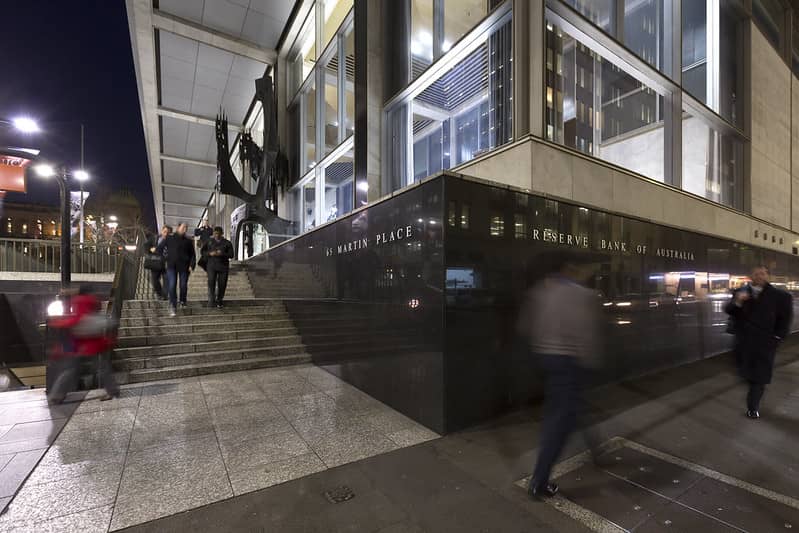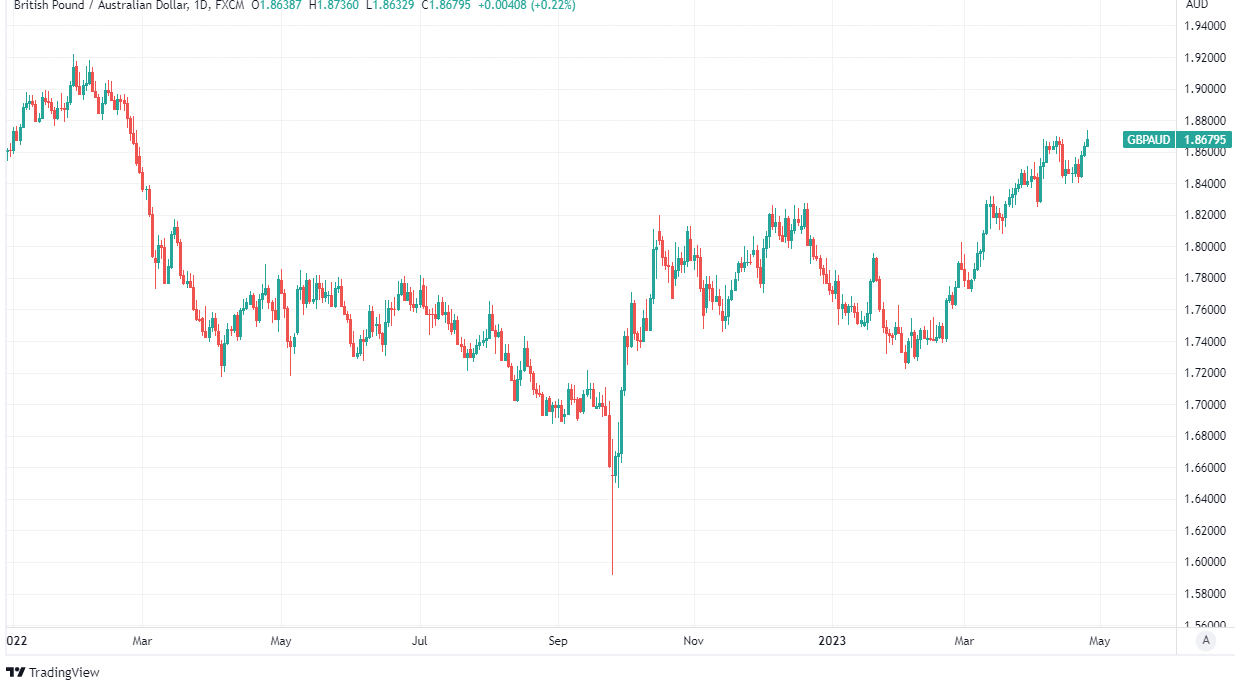GBP/AUD Rate at Risk of Post-ANZAC Day Setback
"If this number comes out higher than anticipated, we expect the AUD to rally" - Sable International.

Image © RBA.
The Pound to Australian Dollar exchange rate reached its highest since the opening of Russia's full-scale invasion of Ukraine in ANZAC Day trade but would be susceptible to sharp corrective losses almost immediately after if Australian inflation is anything like as stubborn as that in the UK.
Australia's Dollar plumbed the bottom of the major currency basket in Tuesday's European trading session with price action coming in contrast to that observed in New Zealand after the Kiwi outperformed alongside the Japanese Yen in what were risk-averse market conditions.
Losses left the Australian Dollar sitting close to the bottom of the board for the week to Tuesday when the antipodean unit is measured against both G10 and G20 counterparts but there could be scope for a rebound that would likely push GBP/AUD sharply lower in any such eventuality.
"The growing evidence that Reserve Bank rate hikes are working to restrain demand suggests there are downside risks to the CPI, Australian interest rates and AUD/USD this week," says Joseph Capurso, head of international economics at Commonwealth Bank of Australia.
"The weaker than expected New Zealand Q1 23 CPI released last week is also instructive because the CPIs in the two economies are highly correlated," Capurso and colleagues write in a Monday research briefing.
 Above: Pound to Australian Dollar rate shown at daily intervals. Click image for closer inspection.
Above: Pound to Australian Dollar rate shown at daily intervals. Click image for closer inspection.
Economist forecasts suggest on average that inflation in Australia likely ebbed from an annual 6.8% to 6.5% last month with the quarterly measure seen falling from 1.9% to 1.3%, while the trimmed mean inflation measure is seen falling from 1.7% to 1.4%.
If realised, the consensus forecasts for Wednesday's figures would suggest Australian inflation is well past its peak and on route back to the Reserve Bank of Australia (RBA) target of 2% to 3% but the risk or danger may be on the upside much more than the downside.
This would be especially the case if there is any similarity with inflation in the UK where price pressures have held stubbornly in the double digits over recent months, leading financial markets to revise higher the expected levels of the Bank of England (BoE) Bank Rate.
"Market pricing for the 2 May RBA policy decision has edged up over the past week, to about 35% chance of a 25bp hike to 3.85%," says Sean Callow, a senior strategist at Westpac in Sydney.
"But of course this pricing – and the Aussie dollar – could swing sharply if Australia’s Q1 CPI surprises,” he adds in a Monday market commentary.
 Above: Pound to Australian Dollar rate shown at weekly intervals. (To optimise the timing of international payments you could consider setting a free FX rate alert here.)
Above: Pound to Australian Dollar rate shown at weekly intervals. (To optimise the timing of international payments you could consider setting a free FX rate alert here.)
The RBA has raised its cash rate 10 times over the last year, taking it to 3.6%, and said several times that it views Australia's inflation rate as having topped out.
This has led interest rate derivative markets to come to the view that the cash rate is highly likely to remain unchanged through the remainder of the year, which has come at a cost to the Australian Dollar and particularly in relation to currencies of central banks that have been more aggressive.
But some barometers have continued to suggest a robust economy over recent months including those relating to the labour market where employment growth remains strong and could be a source of wage growth and inflation risk in the months ahead.
The reserve bank and many economists, however, see inflation and wage growth as likely to limited by Australia's growing population and labour force.
"Overall, we expect the data to show slowing inflation across the board. If this number comes out higher than anticipated, we expect the AUD to rally," says Sebastian Steyne, an FX risk and hedging specialist at Sable International.
